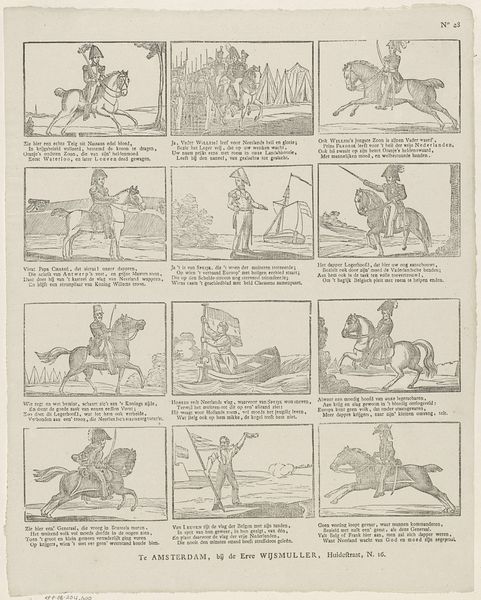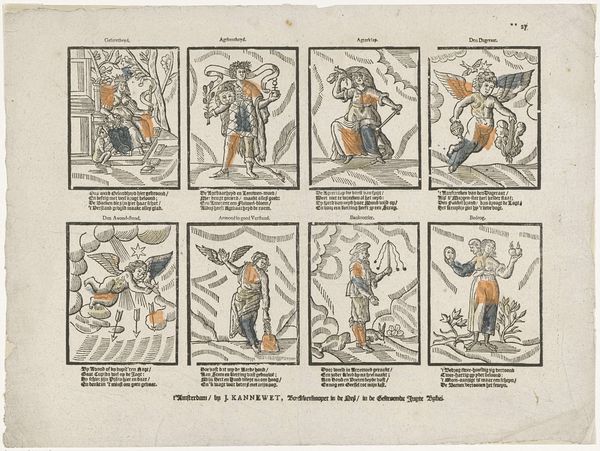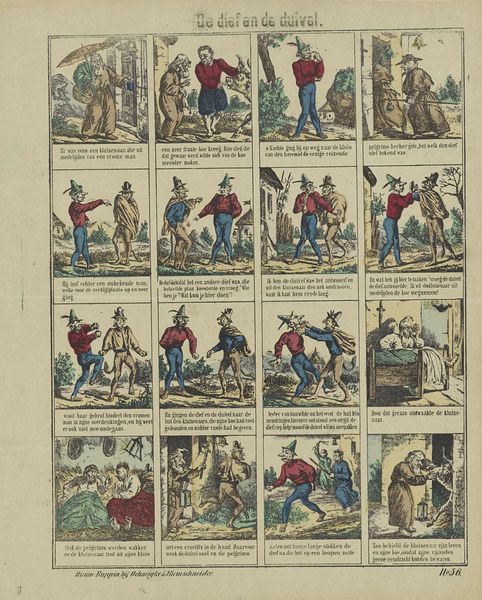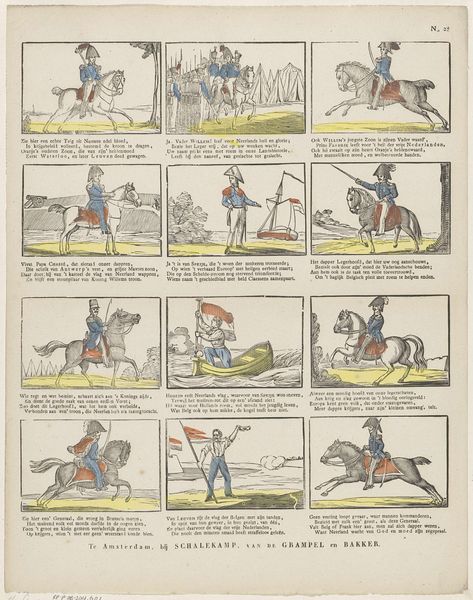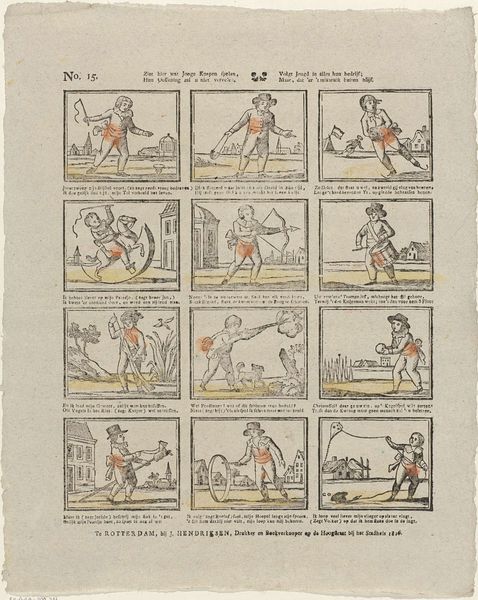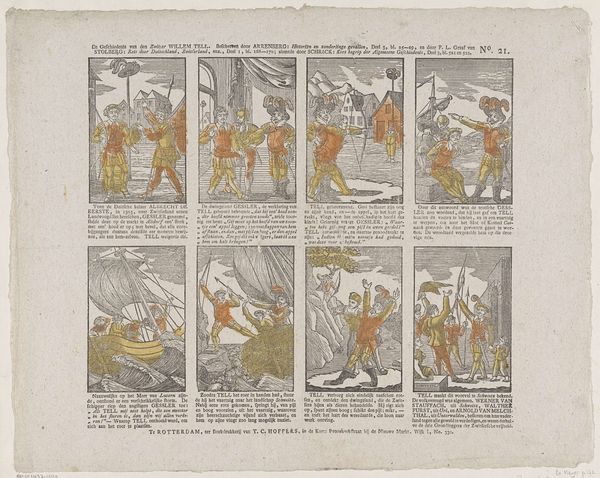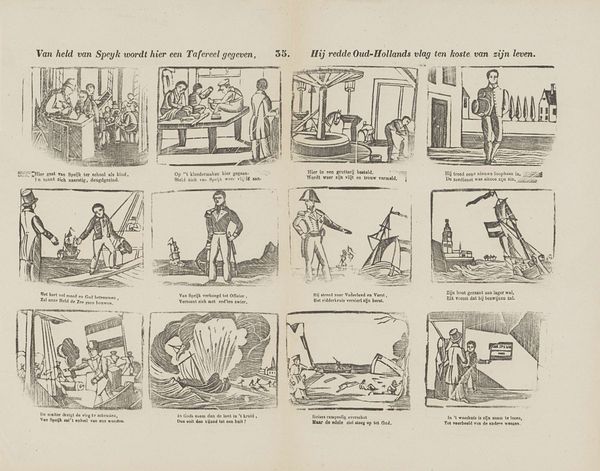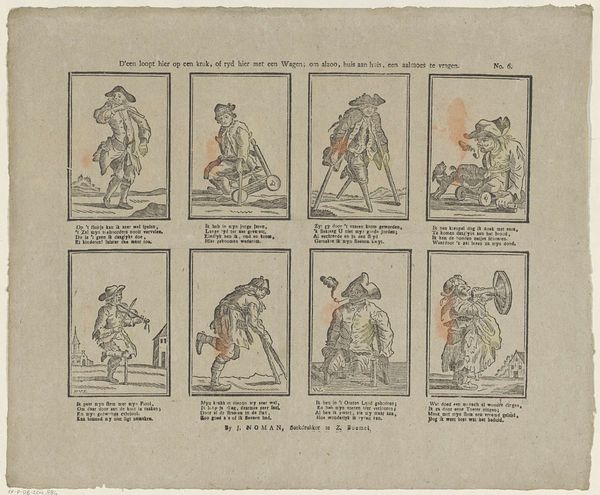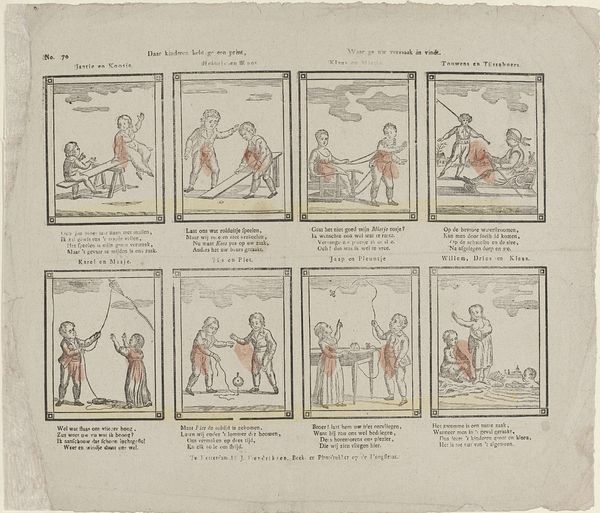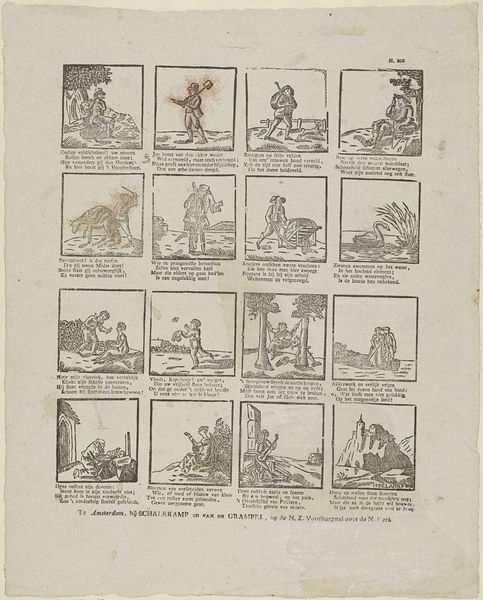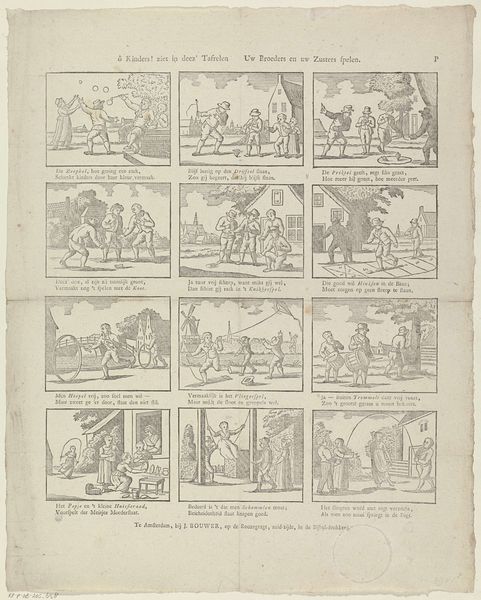
Vermaak u, lieve jeugd, in uwen tijd van speelen, / Niet altijd met het spel, maar ook met prenttafreelen 1831 - 1854
0:00
0:00
print, engraving
#
narrative-art
#
dutch-golden-age
# print
#
engraving
Dimensions: height 332 mm, width 416 mm
Copyright: Rijks Museum: Open Domain
Editor: Here we have "Vermaak u, lieve jeugd, in uwen tijd van speelen, / Niet altijd met het spel, maar ook met prenttafreelen," a print dating from the mid-19th century by Erve H. Rynders. It features these hand-colored vignettes of soldiers and everyday scenes. It almost feels like a board game in print form. What strikes you when you look at it? Curator: It’s fascinating how this print reflects the shifting dynamics of childhood and nationalism in the 19th century. Produced at a time of growing national consciousness, particularly after the Napoleonic era, these images played a role in shaping young people's perceptions of their society, especially regarding military valor and societal roles. Consider the title. It speaks directly to children. What's implied by mixing "speelen" with "prenttafreelen", playing with print depictions? Editor: Maybe it suggests that even playtime should include engagement with visual lessons? Perhaps these "prenttafreelen" were intended to instill particular values, such as patriotism or perhaps… domesticity? Curator: Precisely! Notice how warfare is presented alongside domesticity, literally sharing the same sheet. It indicates the dual spheres in which children were expected to learn and eventually participate. Prints like this one weren’t just decorations; they were tools for social engineering, subtly teaching children their expected places within the socio-political structure. Editor: So it's about how cultural values are embedded within children's materials, like books or toys... making the artwork part of that historical narrative. That's really interesting to think about. Curator: Exactly. Considering the cultural role of what seems like children’s entertainment completely transforms the way we view its creation and function. The Rijksmuseum's walls suddenly echo a bit differently.
Comments
No comments
Be the first to comment and join the conversation on the ultimate creative platform.
